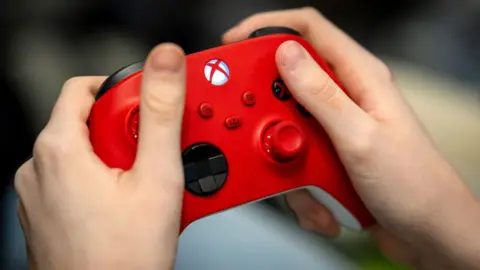In a notable shift within the gaming industry, Microsoft has recently announced a global price increase for its Xbox consoles. This decision comes amid rising development costs and what the company refers to as “market conditions.” Effective immediately, the price of the Xbox Series S has risen by £50, bringing it to a total of £299.99. Additionally, the more powerful Xbox Series X has seen a price hike of £20, and an even larger increase of £40 for its version equipped with extra storage.
The current situation also coincides with concerns regarding US tariffs, which many experts predict may further inflate consumer prices globally. However, Microsoft has not directly attributed the price rises to these tariffs. This pricing change comes in the wake of similar actions taken by rival Sony, which recently announced a £40 increase for the disc drive-free digital edition of the PlayStation 5 in the UK, exemplifying a broader trend in the gaming hardware market.
Historically, price adjustments in the gaming industry have leaned towards reductions in the years following a console’s launch, as manufacturers aim to drive sales and capture a larger market share. The current trend, however, marks a significant departure from this pattern. In a blog post addressing these changes, Microsoft acknowledged the challenges posed by the new pricing structure, explaining that the adjustments were made after careful consideration of rising development costs and the prevailing market dynamics.
In the United States, the price increases appear to be more drastic, with the Xbox Series X’s costs escalating by a range of $100 (£75) to $130, depending on the version. Industry experts, such as Christopher Dring of The Game Business newsletter, speculate that the repercussions of US tariffs could cause other companies, such as Sony, to elevate global prices as a strategy to mitigate potential impacts on the lucrative US market.
Beyond hardware, the discussion regarding rising costs extends to software, as Microsoft anticipates that some of its forthcoming first-party games could be priced at $79.99 in 2025. This anticipated pricing aligns with the consumer reaction to Nintendo’s recent declaration of a similar $75 tag for its upcoming game, Mario Kart World. Gamers have expressed concerns regarding accessibility, labeling such price points as “inaccessible.”
Contrastingly, unlike Nintendo, which offers a lower digital purchase price compared to its physical version of Mario Kart, Microsoft has stated that it intends for the price of its new games to remain consistent across all platforms. This approach raises questions about the potential pricing strategies for its existing titles. Microsoft clarified that while it does not plan to increase the prices of current games, new releases, particularly those developed in-house, may see new price points—but specific details for the UK market remain undecided.
As the gaming landscape continues to evolve, these price adjustments by both Microsoft and Sony hint at a challenging environment marked by economic uncertainties, rising costs, and heightened consumer expectations. The broader implications suggest that players may need to prepare for a sustained era of higher prices in both gaming consoles and their respective games. With further changes anticipated, it remains crucial for consumers to remain informed about these developments and how they might impact their gaming experiences in the foreseeable future.
In light of this, the gaming community has been urged to examine the shifts in marketplace dynamics that are shaping not only the industry itself but also the cost propositions for gamers globally. As the dialogue around pricing intensifies, it will be interesting to observe how both consumer sentiment and market strategies evolve in response to these turbulent economic conditions.



